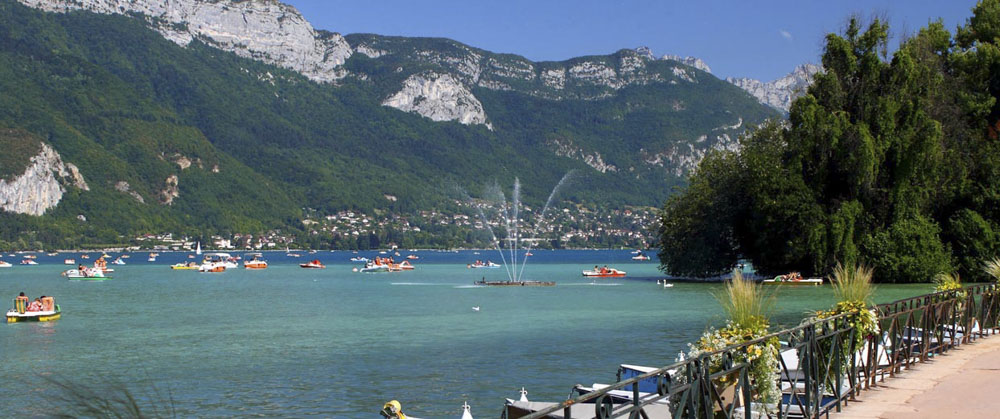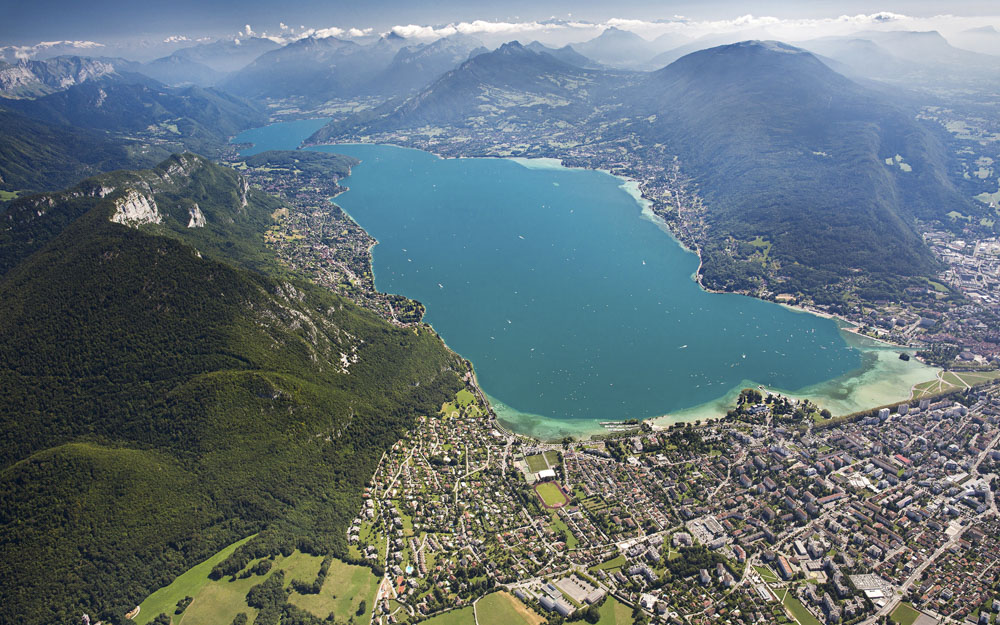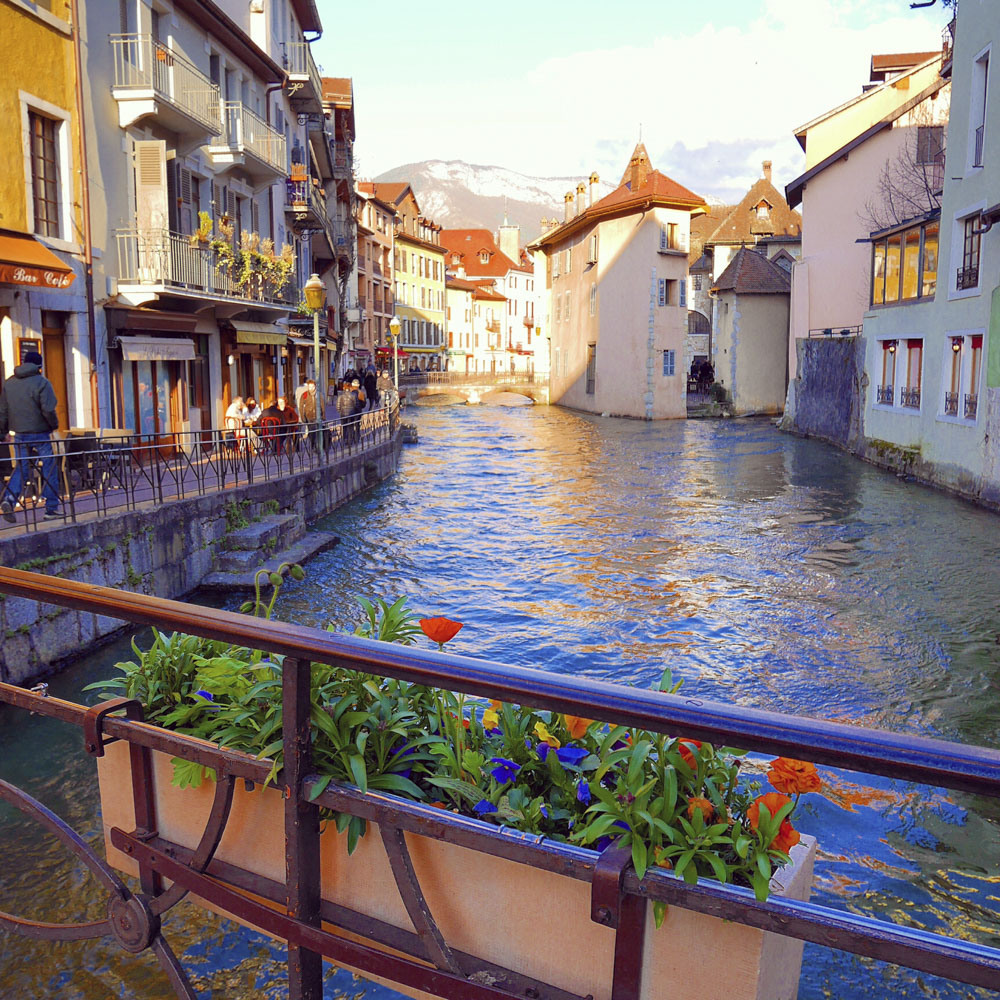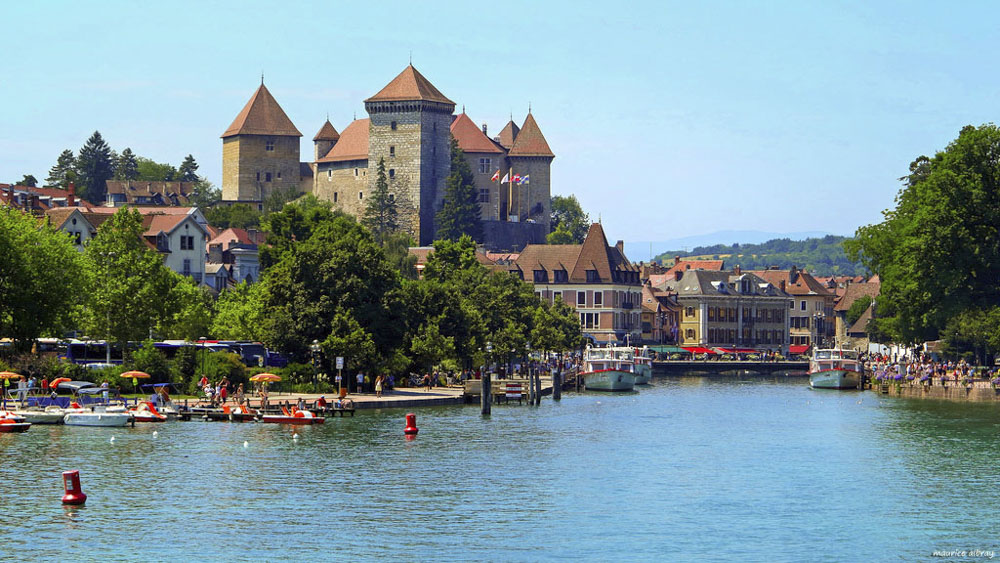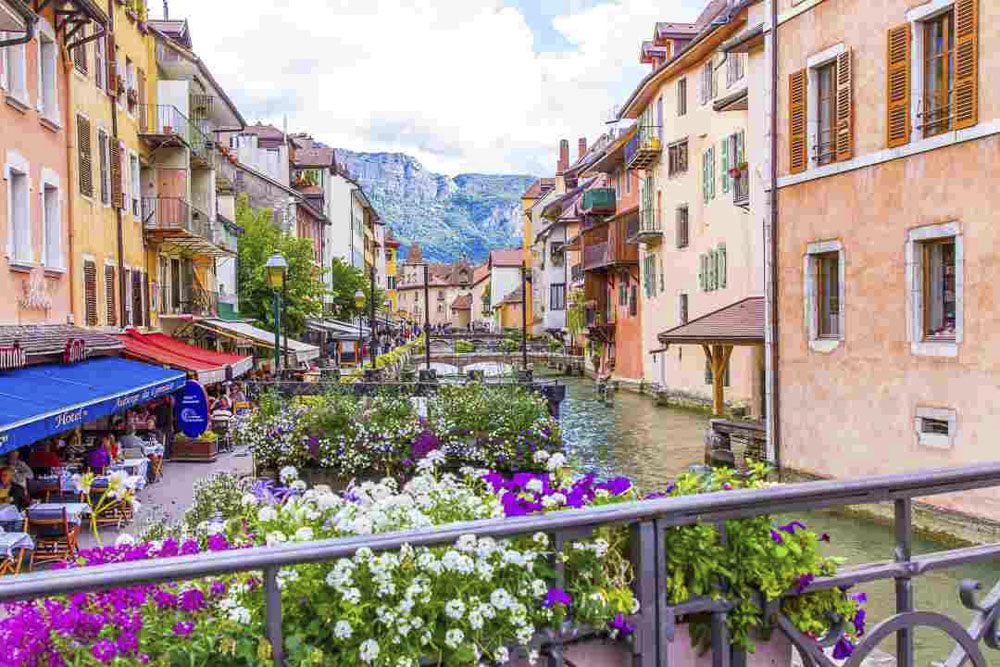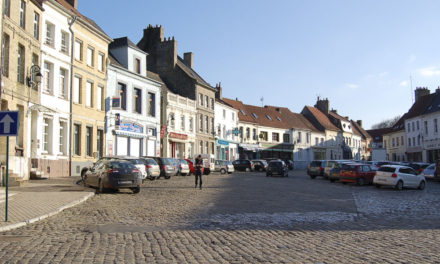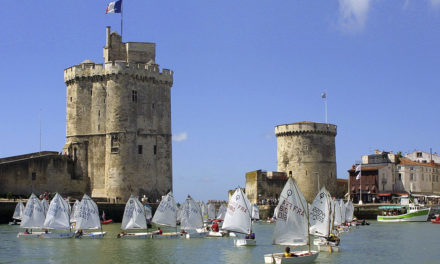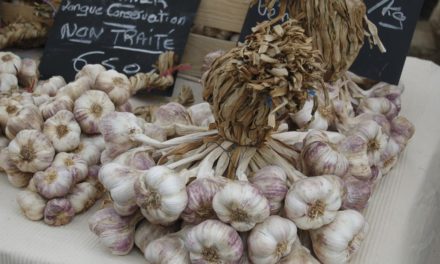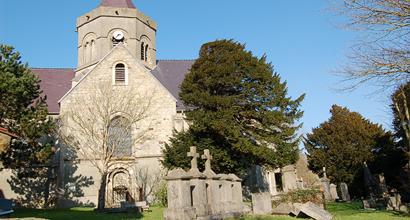The canal-criss-crossed, chocolate-box-pretty city of Annecy hides somewhat coyly in the northwest corner by the lake which shares its name, although modern Annecy has sprawled right across the north side of the waters. In fact, submerged remnants going back to Neolithic times have been found along the north shore. The medieval town grew up around the castle, dating back as far as the 12th century, when the counts of Geneva built one of their main bases here, serving as something of a capital to them for a time. Following the death of Robert of Geneva, Annecy was purchased in 1401 by Amédée VIII of Savoy, and from mid-15th to mid-17th centuries, its lordship was reserved for junior members of the house of Savoie, encouraging prosperity.
With the splits caused by the Reformation in the 16th century, Annecy acquired wider religious importance. Geneva had become the stronghold of Protestantism, the city’s monastic communities expelled. Many moved to Annecy, which became the seat of a new bishopric for the Genevois. The most famous of these Geneva bishops in exile was the charismatic François de Sales, who devoted his life to gentle but persuasive preaching of a virtuous Catholic life. In 1610 he established the charitable Order of the Visitation at Annecy with Jeanne de Chantal. He was also a founder member here of the Académie Florimontane, a high-minded cultural institution set up to encourage good writing and good morals in the literary arts, a model for Cardinal Richelieu’s slightly later Académie Française. François de Sales was buried in Annecy, canonised in 1665, and proclaimed patron saint of writers and journalists in 1923, when the Basilica of the Visitation was being built above town – it now stands out more than the castle from afar, along with a few unfortunate modern apartment blocks. In 1728, the young Jean-Jacques Rousseau arrived in town, fleeing misery as an engraver’s apprentice in Geneva. At the convent of the Visitation, he met a slightly older Swiss in exile, the eccentric, kind-hearted, potion-concocting divorcee and Catholic convert, Madame de Warens. It was sympathy if not love at first sight for the woman he would call his Maman, his real mother having died giving birth to him.
While Annecy became capital of the département of Haute Savoie when Savoie became French, its lake grew increasingly polluted as industry developed in 19th and 20th centuries. After the war, the dynamic mayor Charles Bosson set about reviving it. The waters are now considered among the clearest and healthiest in Europe, winning prizes and plaudits, although the hordes of visitors can be hard to regulate. As to national flower awards, Annecy supposedly won so often that it was banned from taking part!
Book a Hotel in Annecy
Museum 1
Heading into the tourist-packed, canal-side streets, start your tour on the Pont sur le Thiou, from where the town’s most celebrated building, the Palais de l’Ile, resembles a stone vessel anchored in the midst of the river. It dates back to the 12th century, and has served as residence, prison, mint, and law courts. It now contains the Musée de l’Histoire d’Annecy, offering a light introduction to local history. The basic-looking Café des Arts also on the island puts on Savoyard events. Looking in the other direction from the Pont sur le Thiou, the grand scrolled front of the church of St-François de Sales signals where the first monastery of the Order of the Visitation was located. During the Revolution the church was badly damaged, François de Sales and Jeanne de Chantal’s tombs demolished, but the place has been restored. North, the Dominican Gothic barn of St-Maurice is the oldest church in Annecy, but only dates from 1422. Look out for the creepy funeral picture for Philibert de Monthouz and the Depostion by Pourbus the Elder.
Walk along the gorgeous colourful quays or, almost equally lovely, parallel Rue Grenette and Rue Jean-Jacques Rousseau for the cathedral of St-Pierre, with its striking Gothic to Renaissance façade. Built for the Franciscans in 1535, it was converted into the bishops’ seat with the move from Geneva. Dramatic chiaroscuro paintings stand out inside, another Deposition attributed to Caravaggio. The bishops’ palace now houses a school of music and the Académie Florimontane. The tempting shops of Rue Filaterie lead you up to further enchanting quays before the fourth central church of note, the imposing Notre-Dame-de-Liesse, signalled by its tall, leaning bell tower rising above a bright square. The edifice was rebuilt after the Revolution, its classical front topped by a gilded statue of the Virgin and Child. Bright murals brighten the dull classicism inside, although the figure’s faces aren’t well executed. An English church hides in the elegant house next door.
Among further arcaded streets, don’t miss Rue du Pâquier and the Hôtel de Sales, a mansion embellished with figures of the seasons. Its continuation, Rue Royale, is a major, but more mundane, shopping artery. Further modern shopping quarters lie to the north.
Museum 2
Crossing south of the Thiou via one of many photogenic bridges, arcaded Rue Ste-Claire curves irresistibly around the base of the castle’s rock. This was the main thoroughfare of medieval Annecy, now lively night and day in the tourist season. The Château d’Annecy (t 04 50 33 87 30, musees@ville-annecy.fr) stands a short walk up the hill, but a world away from the tourist crowds. The enormous 13th-century Tour de la Reine forms the oldest part of the massive ensemble. The 14th–15th-century Gothic Logis Vieux and the 16th-century Renaissance Logis Nemours contain a regional museum filled with religious statues and all too pretty paintings of Annecy. The Observatoire Régional des Lacs Alpins, set apart in the 15th-century Logis Perrière, delves into the formation of the region’s lakes and their ecology.
The Conservatoire d’Art et d’Histoire (t 04 50 51 02 33; free) a bit further out occupies the big plain seminary where trainee priests were educated up to 1970. It now contains a mixed bag of art, including exotic faces sculpted by Evariste Jonchère on his early 20th-century world travels, and contemporary works from the Lyon school. Most excitingly, a new interactive section devoted to pre-cinema experiments in moving images has been installed in the former chapel.
Proud on its higher height, the showy white church of the Visitation, consecrated in 1949, holds relics of François de Sales and Jeanne de Chantal. Pilgrims go to venerate them in large numbers.

